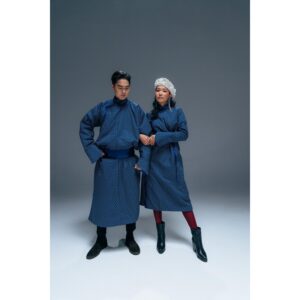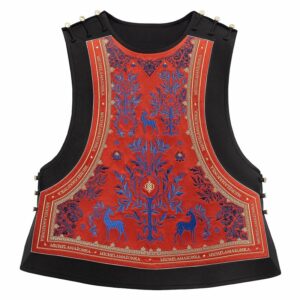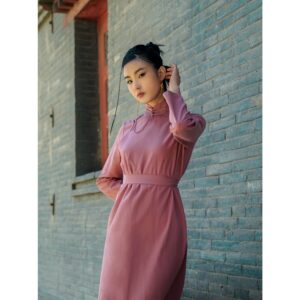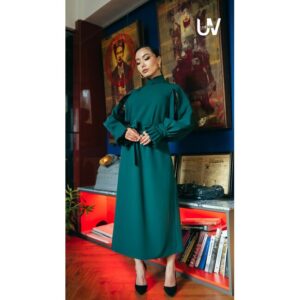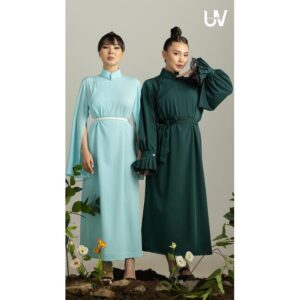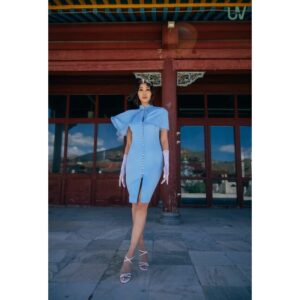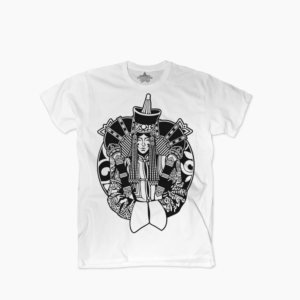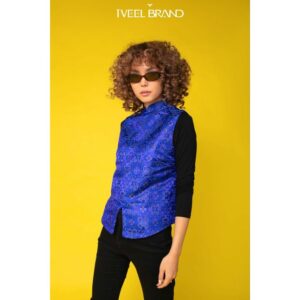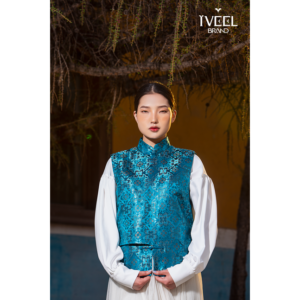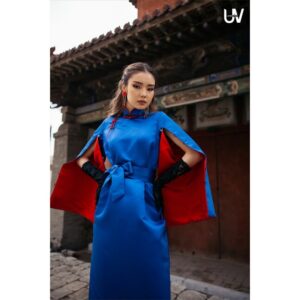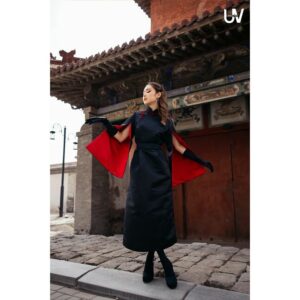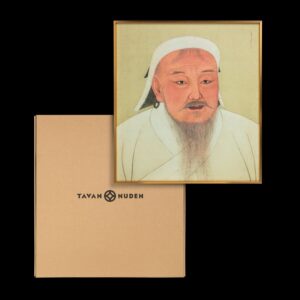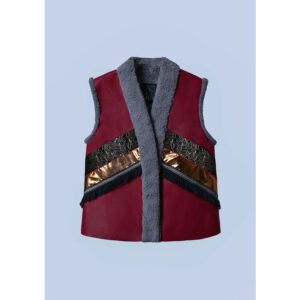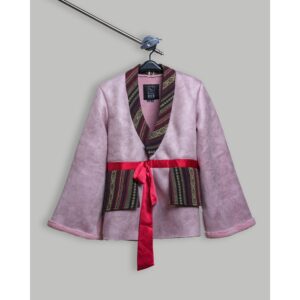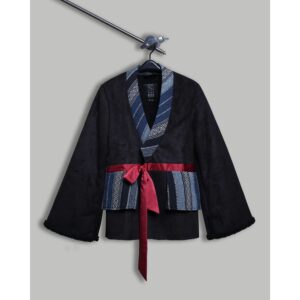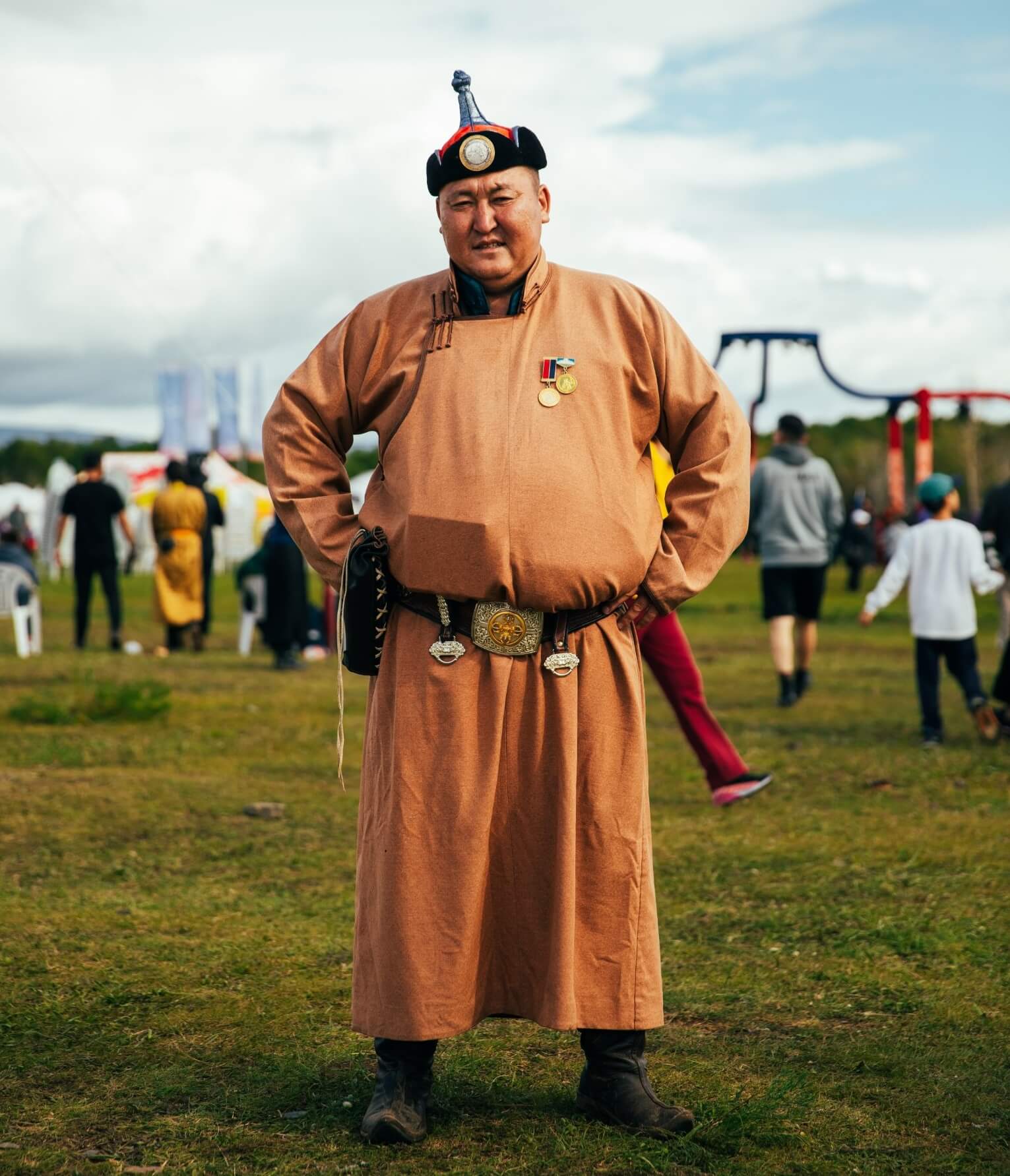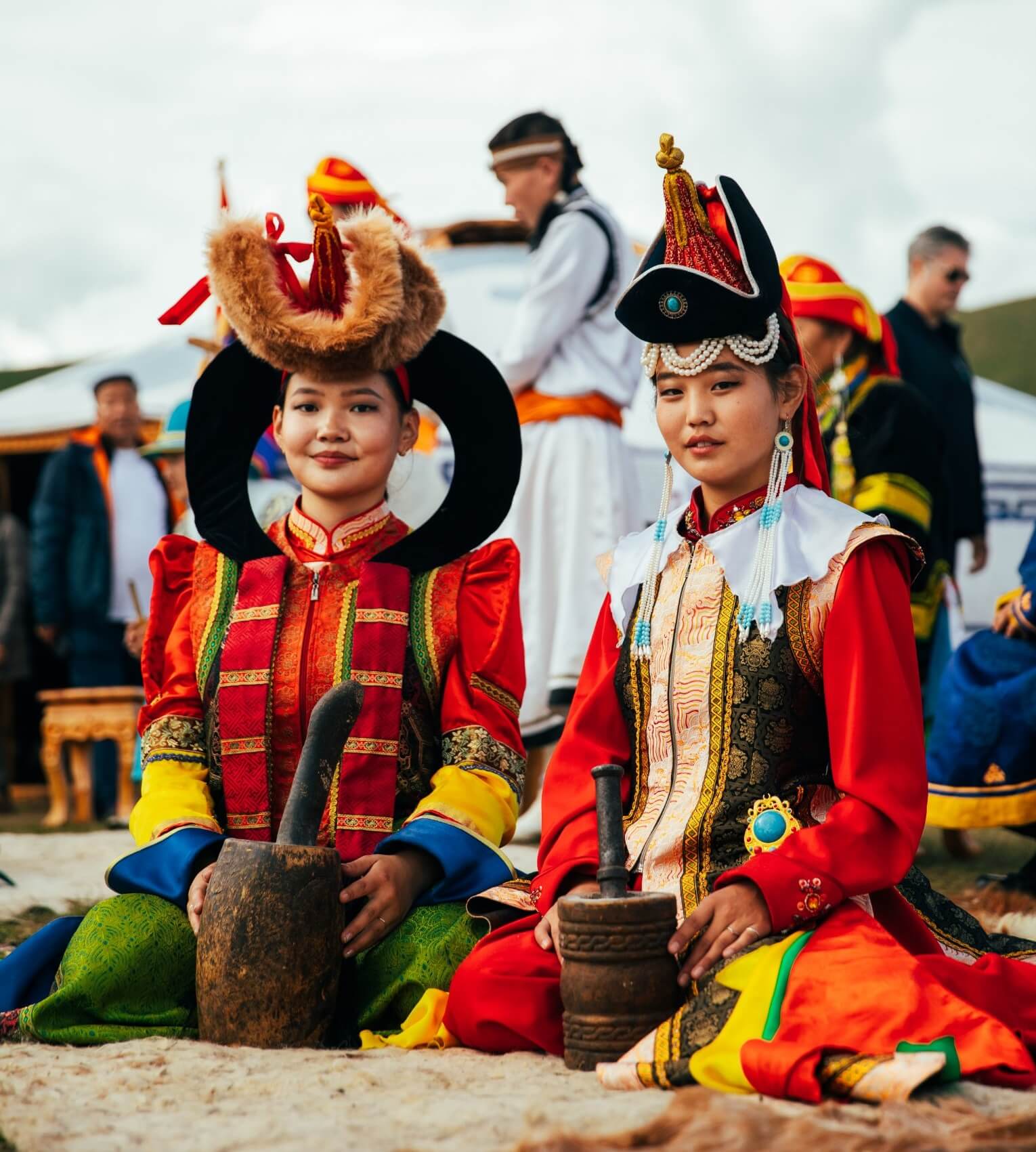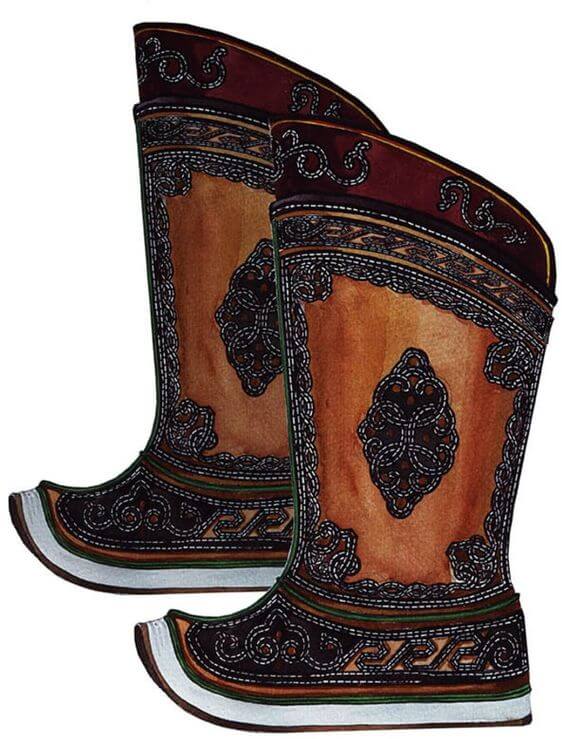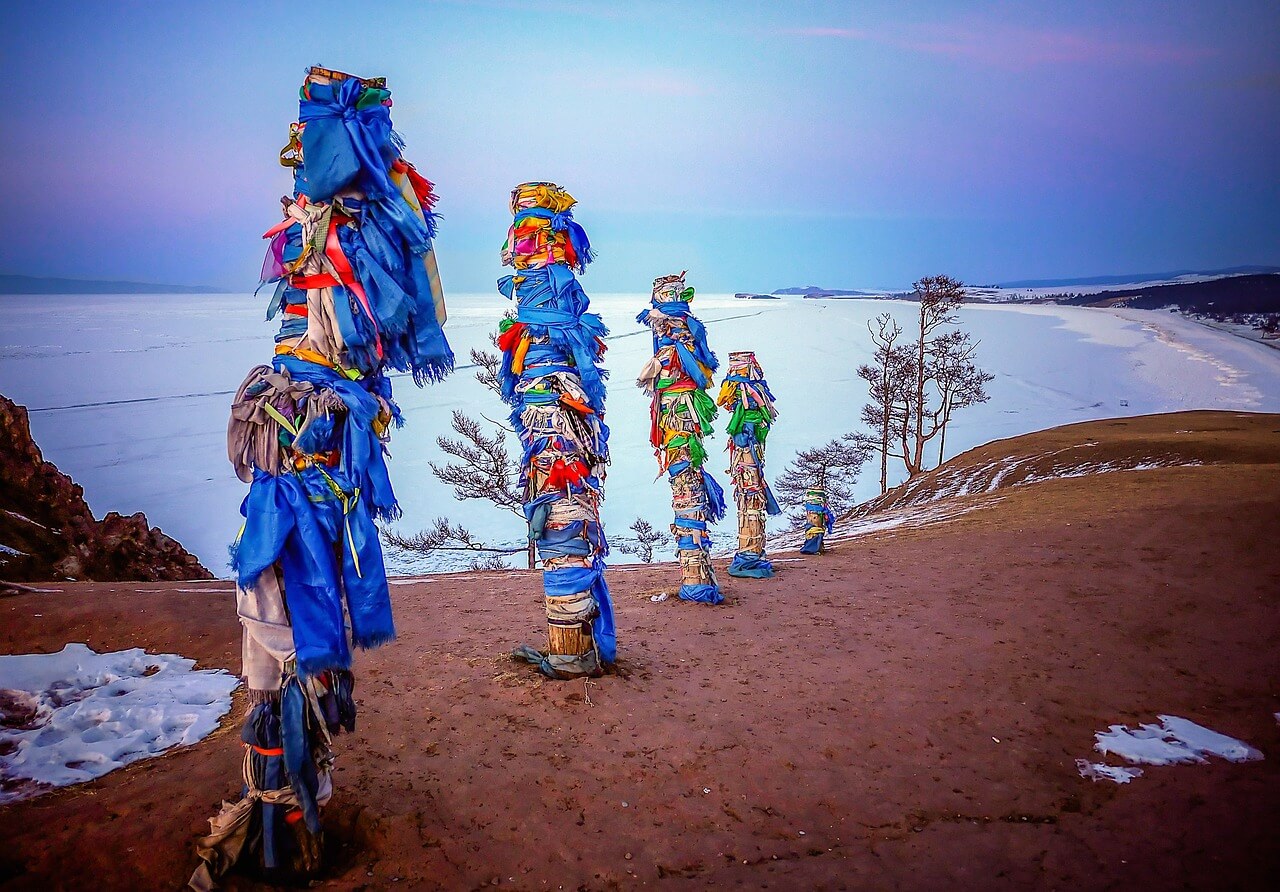Mongolian deel is a traditional garment worn by the Mongols. It is a long caftan-like garment that is typically worn with a hat, vest, belt, and boots. The Deel clothing can be made from a variety of materials, including wool, cotton, or silk.
Every ethnic group has their own unique style and design when it comes to the Deel, which embodies specific features of their culture and origins in Mongolia.
If you are interested in buying a new Deel click here and explore the unique design. All our Deel is made by Mongolian
Key Takeaways
- The Mongolian deel is a historical garment reflecting the nomadic ways and climatic challenges of Mongolia, revealing social standing and is passed through generations.
- Deel variations demonstrate the cultural diversity of Mongolian ethnic groups, with different cuts, colors, and decorations indicating gender, social status, and tribal affiliation.
- Modern interpretations of the deel blend traditional design with contemporary fashion, with designers innovating to meet current trends while maintaining cultural heritage.
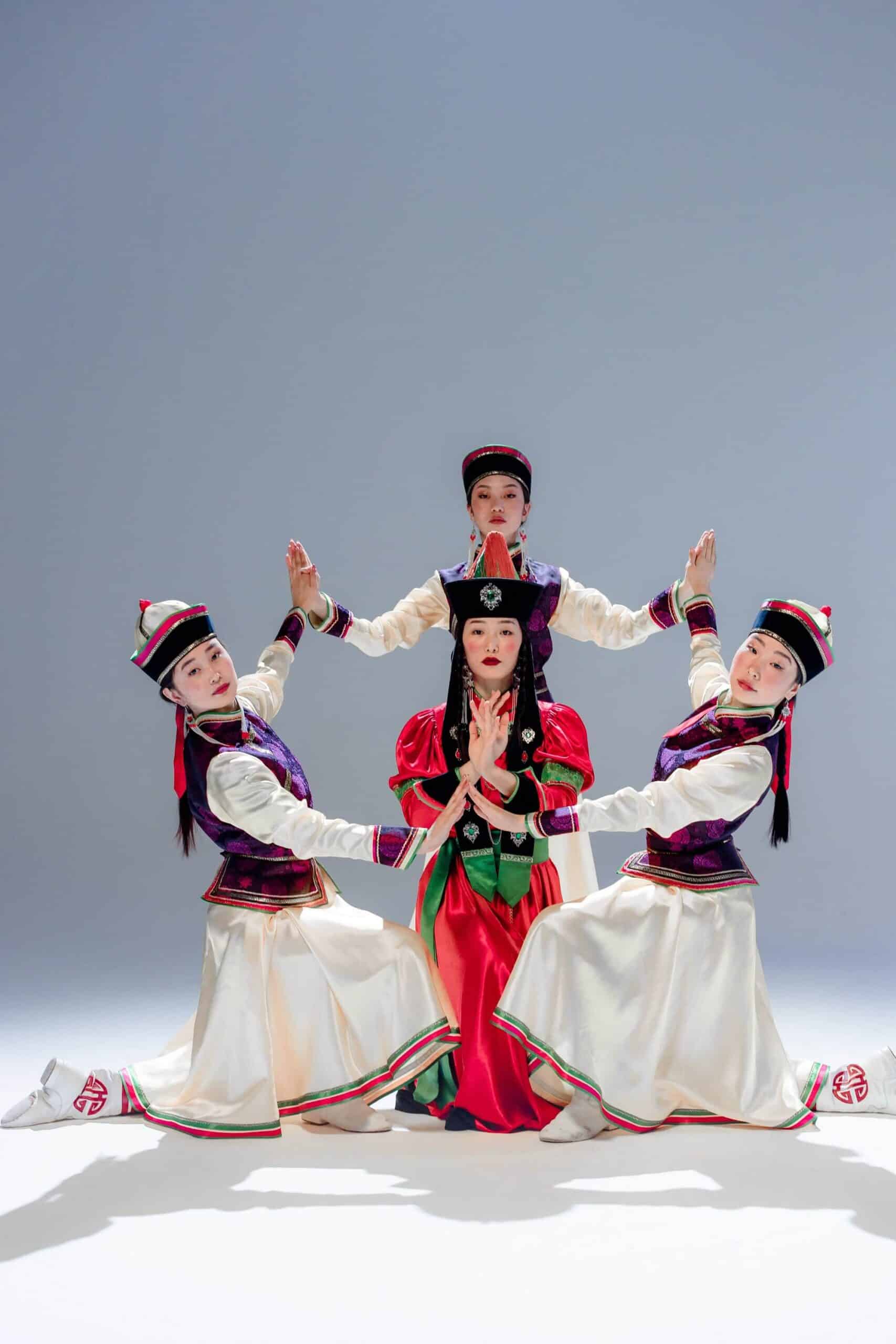
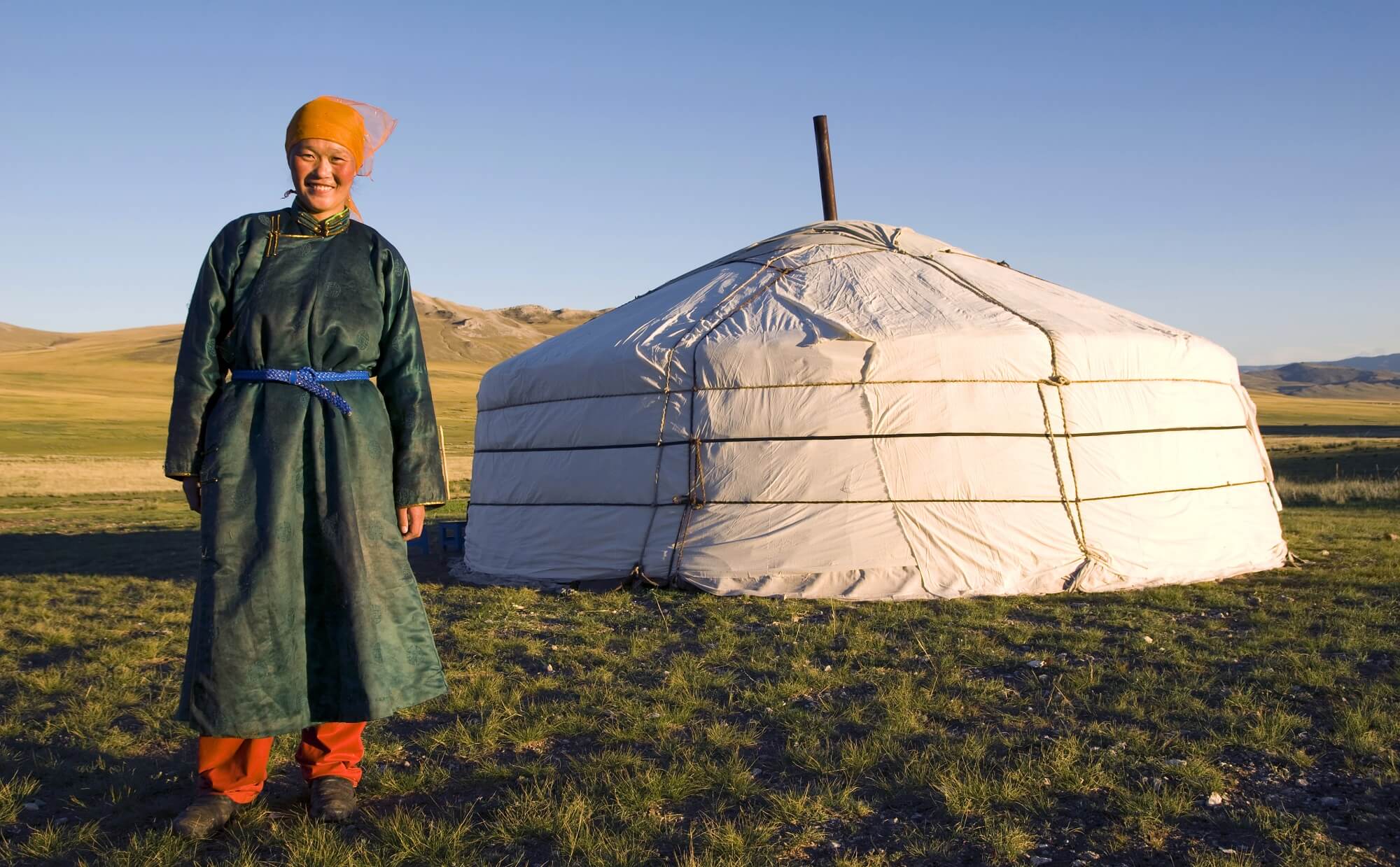
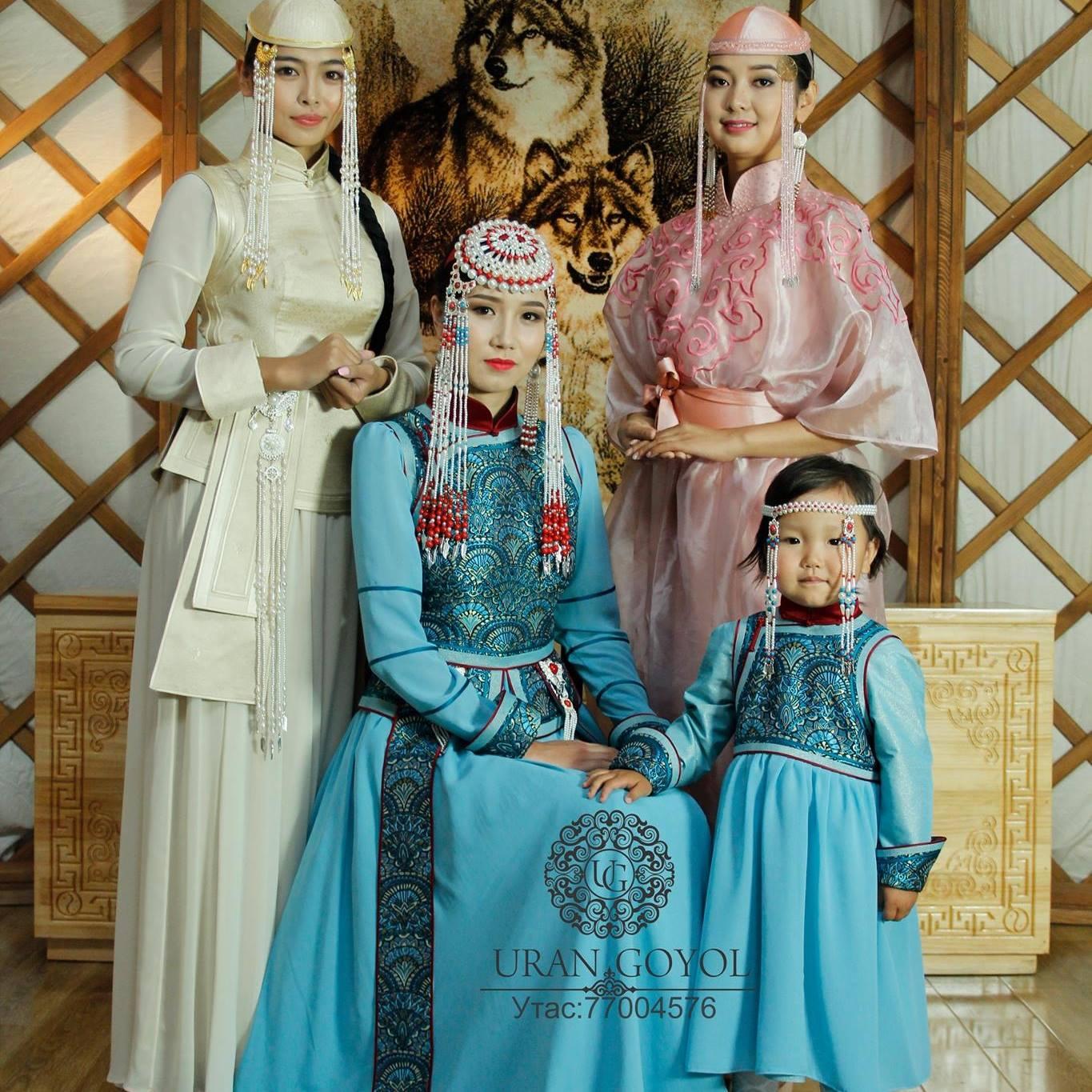
The Deel was first invented by the Mongols. It started from the Khunnu empire, 2200 years ago.
The deel found there is now kept in the Hermitage of St. Petersburg. The deel continued to change and develop, finding its perfect form in the 13th century, and has been worn by them for centuries.
It is still commonly worn today as the traditional clothing of Mongolia. The deel is often decorated with intricate designs and patterns that are unique to each group or region.
Example: The characteristics of Khalkh people’s robes are that they have a high hem, square lapel, and knee-length sleeves. The other characteristic of Khalkh people’s robes is that older people usually wear brown and bamboo-colored robes.
Young girls wear brightly colored robes as much as possible. As for the pattern, it is not appropriate to wear robes with a golden dragon pattern or a heavy pattern every day.
In ancient times, robes with golden dragon embroidery and aqua patterned robes were worn by people of high rank. Ordinary people used daily clothes and no patterned robes.
Young girls wear brightly colored robes as much as possible. As for the pattern, it is not appropriate to wear robes with a golden dragon pattern or a heavy pattern every day.
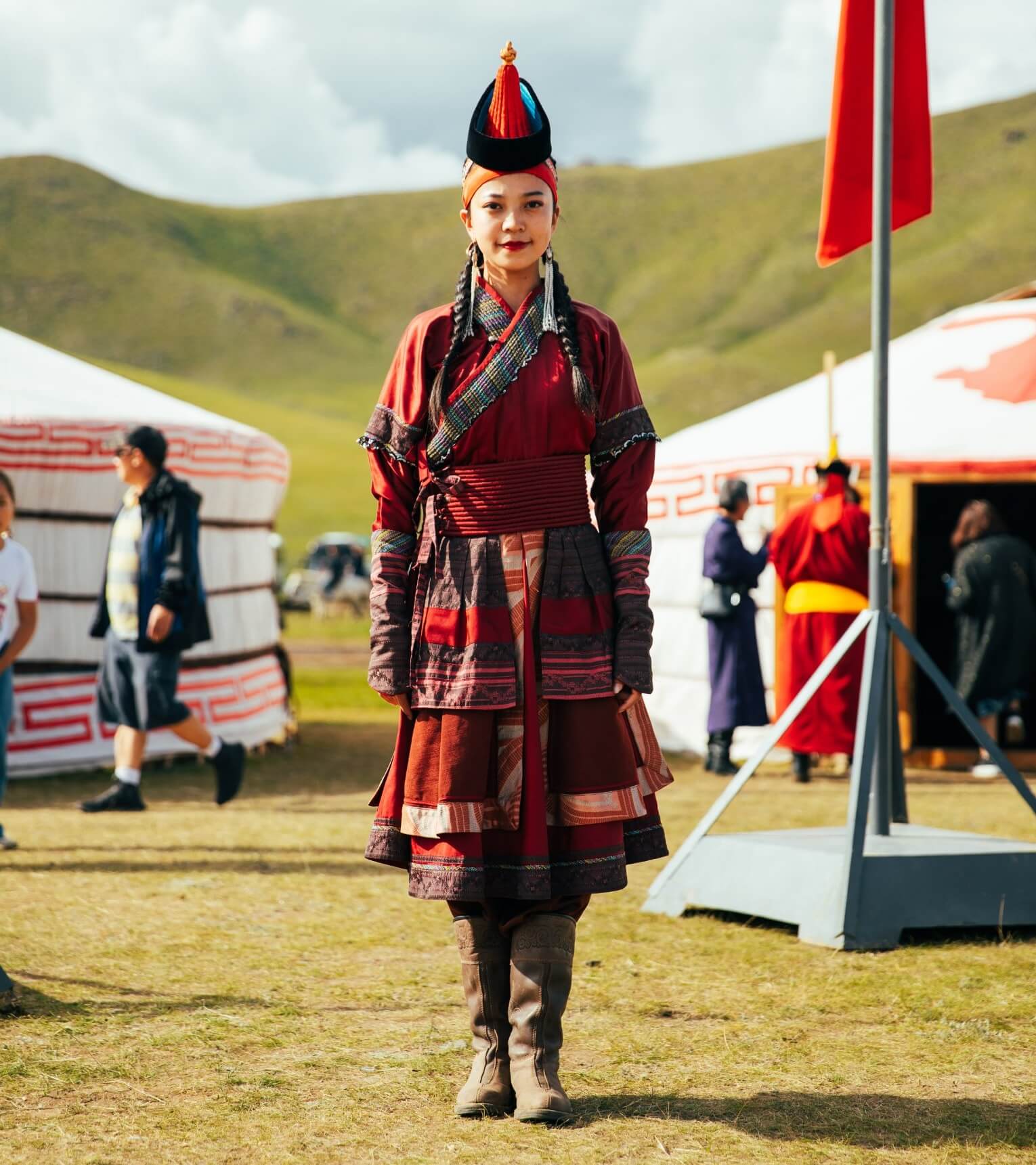
In ancient times, robes with golden dragon embroidery and aqua patterned robes were worn by people of high rank. Ordinary people used daily clothes and no patterned robes.
We have been using deel clothes for centuries and they are well-known for this traditional attire. It is considered to be a very elegant, stylish, and honorific outfit that is perfect for special occasions or formal events.
The Rich History of the Mongolian Deel
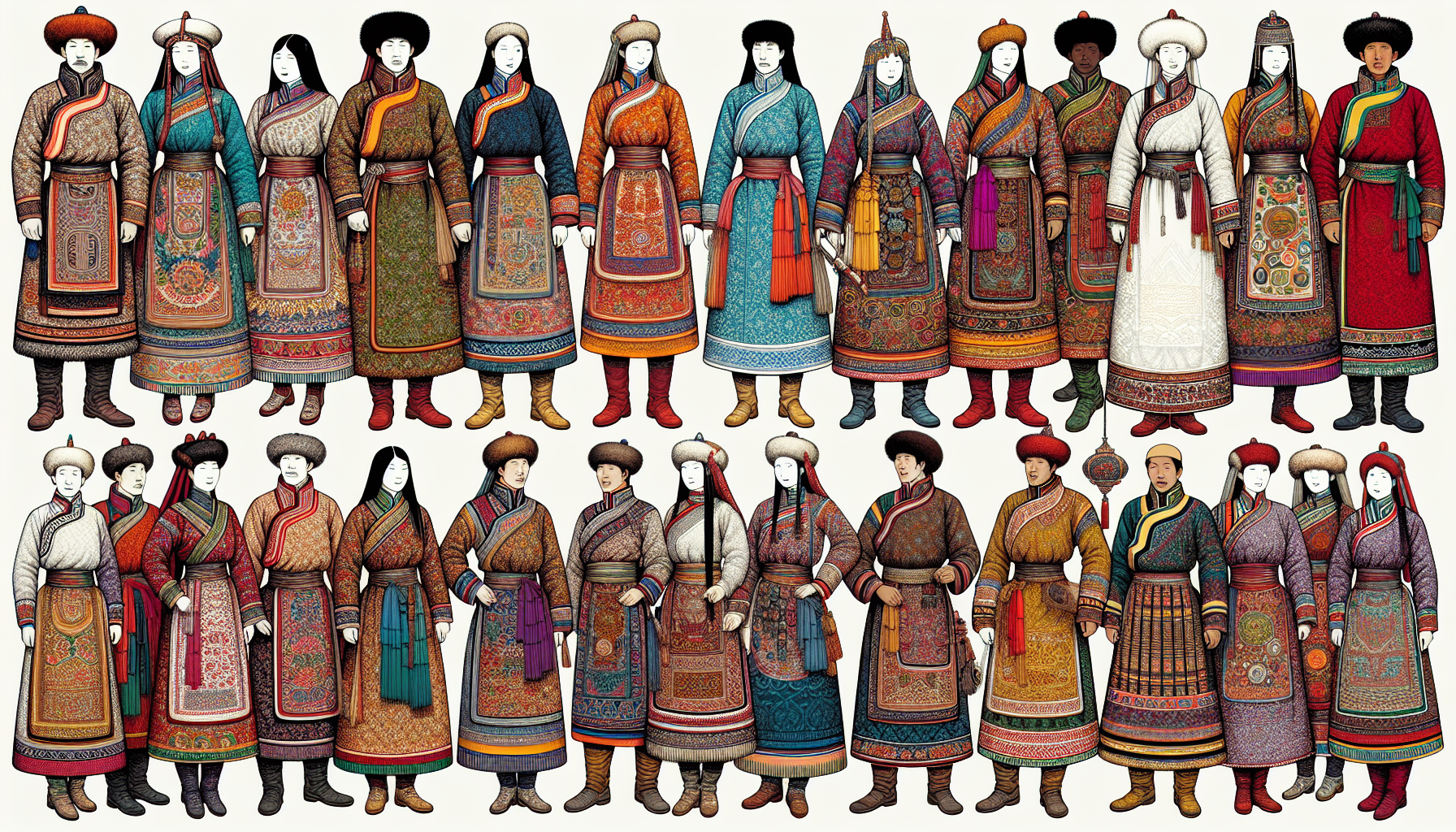
A journey through history reveals the Mongol deel as a timeless garment, worn by the Mongol people, Turkic, and Tungusic peoples for centuries. More than just a piece of clothing, the deel reflects the unique nomadic ways of the Mongolian people and their demanding Mongolian climate.
Characterized by its loose calf-length tunic, long sleeves, high collar, and buttons on the right shoulder, the Mongolian deel has proven timeless, safeguarding the culture, origins, and history of various ethnic groups.
The Khunnu Empire and the Birth of the Deel
The Mongol deel’s origins extend over 2200 years back to the Khunnu Empire. Its longevity is a testament to its cultural significance and adaptability, having been worn by generations of Mongolians through various epochs. The deel’s birth during the Khunnu Empire marked the inception of a garment that would evolve to become a cornerstone of Mongolian identity.
Evolution and Adaptation Through Centuries
Over centuries, the Mongol deel has continually adapted and evolved, responding to shifts in times and circumstances. For instance, during the Manchurian dominance in the early 1700s, Mongolians were compelled to modify their traditional deel by donning cuffs of excessive length. Yet, they adapted to this constraint by folding the cuffs, making them functional and preserving the essence of their attire.
Symbolic Meanings Behind the Deel
Within Mongolian culture, the deel signifies much more than a mere piece of attire. It is a testament to the wearer’s heritage and social standing, revered as an elegant and formal garment for celebratory and official gatherings. As a rite of passage, Mongolian parents instill the value of the deel in their children, often saying, ‘the owner is eternal and the fabric is fragile’.
Thus, the deel becomes a conduit for passing down values and traditions from one generation to the next.
The Anatomy of a Deel
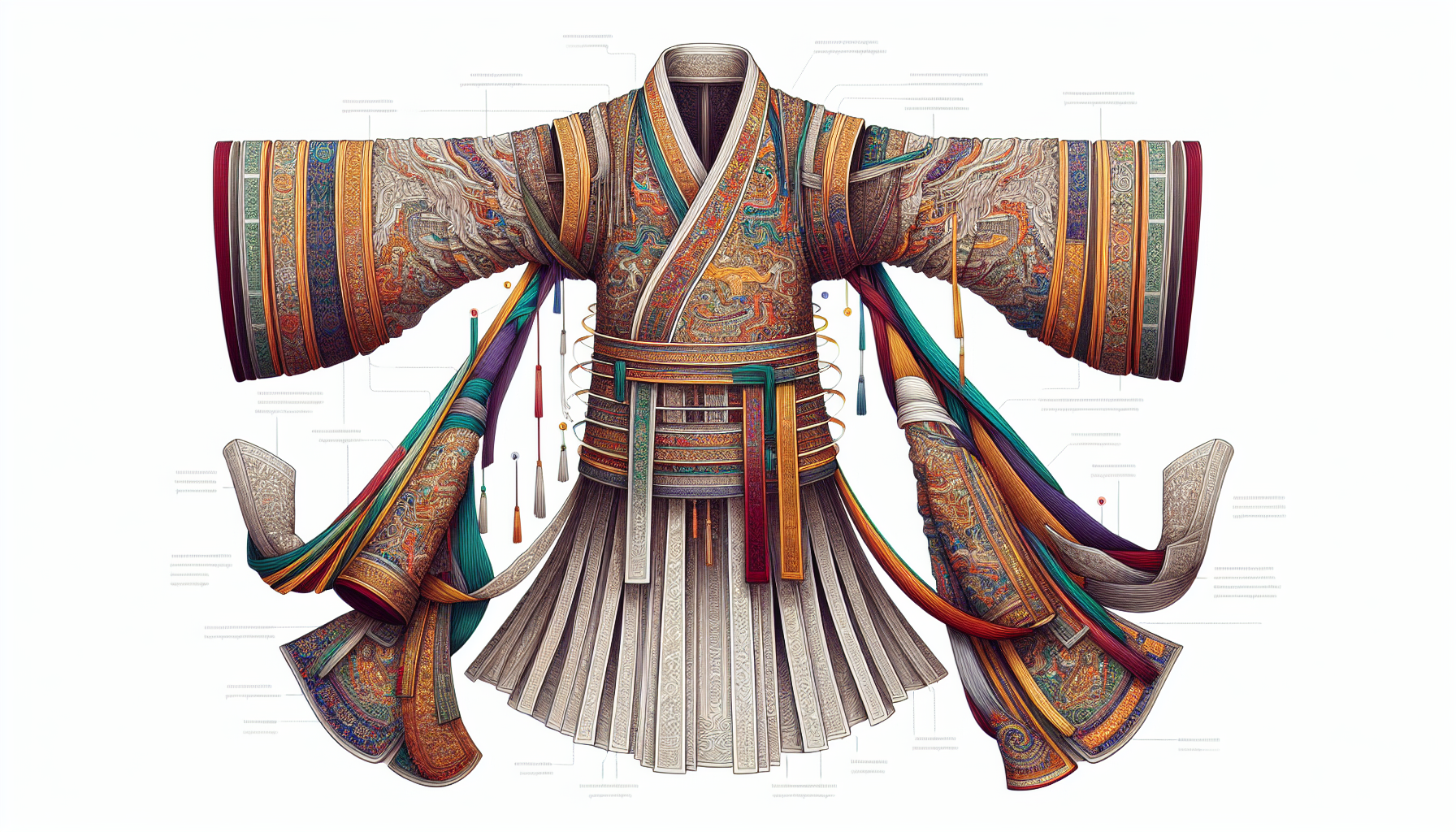
The Mongol deel beautifully combines functional design with aesthetic allure. Traditionally, it is a calf-length tunic, made as a single piece, extending below the knees and flaring at the bottom. The deel sports:
- long sleeves
- a high collar
- fastenings on the right shoulder
- additional clasps at the shoulder, under the armpit, and at the neckline to keep it in place.
The deel is usually adorned in colors such as blue, olive, or burgundy and worn with a large sash or belt fastened at the waist, uniting form and function in a beautiful harmony, while other forms of traditional clothing may differ in style.
Fabric Choices: Wool, Cotton, and Silk
The choice of fabric is paramount in making the deel, influencing its appearance, texture, and functionality. Wool, cotton, and silk are the primary materials used, each lending its unique character to the garment. The choice of fabric is often influenced by the occasion – a high-quality silk deel might be reserved for special events, while everyday deels crafted from wool or cotton cater to the demands of daily life.
Hence, the deel’s fabric reflects the rhythm of Mongolian life, encompassing the simplicity of daily routines and the magnificence of festive events.
Emjeer Ribbon and Button Details
The emjeer ribbon and button details on the deel transcend mere embellishment, serving as subtle indicators of the wearer’s social standing. Buttons crafted from decorative stones or silver add a touch of elegance and often carry cultural significance. The type of knot used in the buttons can indicate the wearer’s wealth, with fully knotted buttons symbolizing prosperity and hollow ones indicating poverty.
Thus, the buttons and ribbons on the deel are not merely decorative details but a visual narrative of the wearer’s social standing, with their own symbolic meanings.
Variations Between Genders and Ethnic Groups
The deel’s versatility allows it to incorporate distinct cultural aspects of various genders and ethnic groups. While men’s and women’s deels share a common cut, they differ in terms of width and color, with men’s deels typically wider and more subdued in hue. Women’s deels usually have a tighter fit, while men’s deels are looser, with larger pockets and broader sleeves.
The variations in deel designs among many different ethnic groups, including Mongolian tribes, reflect the rich tapestry of Mongolian cultural diversity, offering a unique glimpse into the social values and character designs of the Mongolian people.
Traditional Names for Mongolian National Clothes
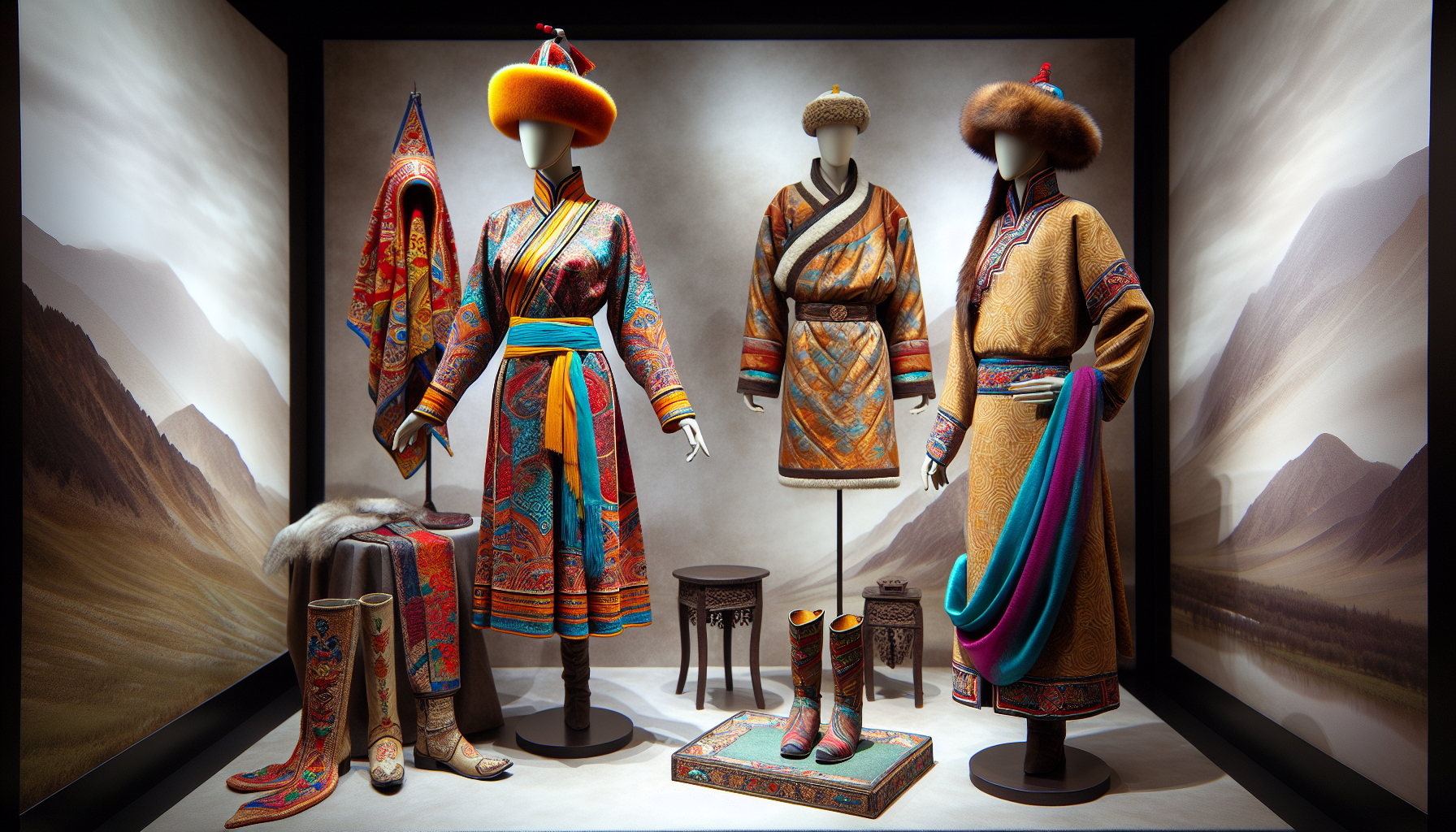
An understanding of the traditional names for Mongolian national clothes is key to fully appreciating the Mongolian deel. The deel is part of an ensemble that includes:
- a hat, known as the ‘Hat of the rising state’
- a sash, known as the ‘Belt of the to be a successful state’
- boots, known as the ‘Boots of the buttress state’
Each component, including the over 400 different types of traditional Mongolian hats, adds a unique layer to the cultural diversity of Mongolian clothing.
Customizing the Deel: Regional and Ethnic Differences
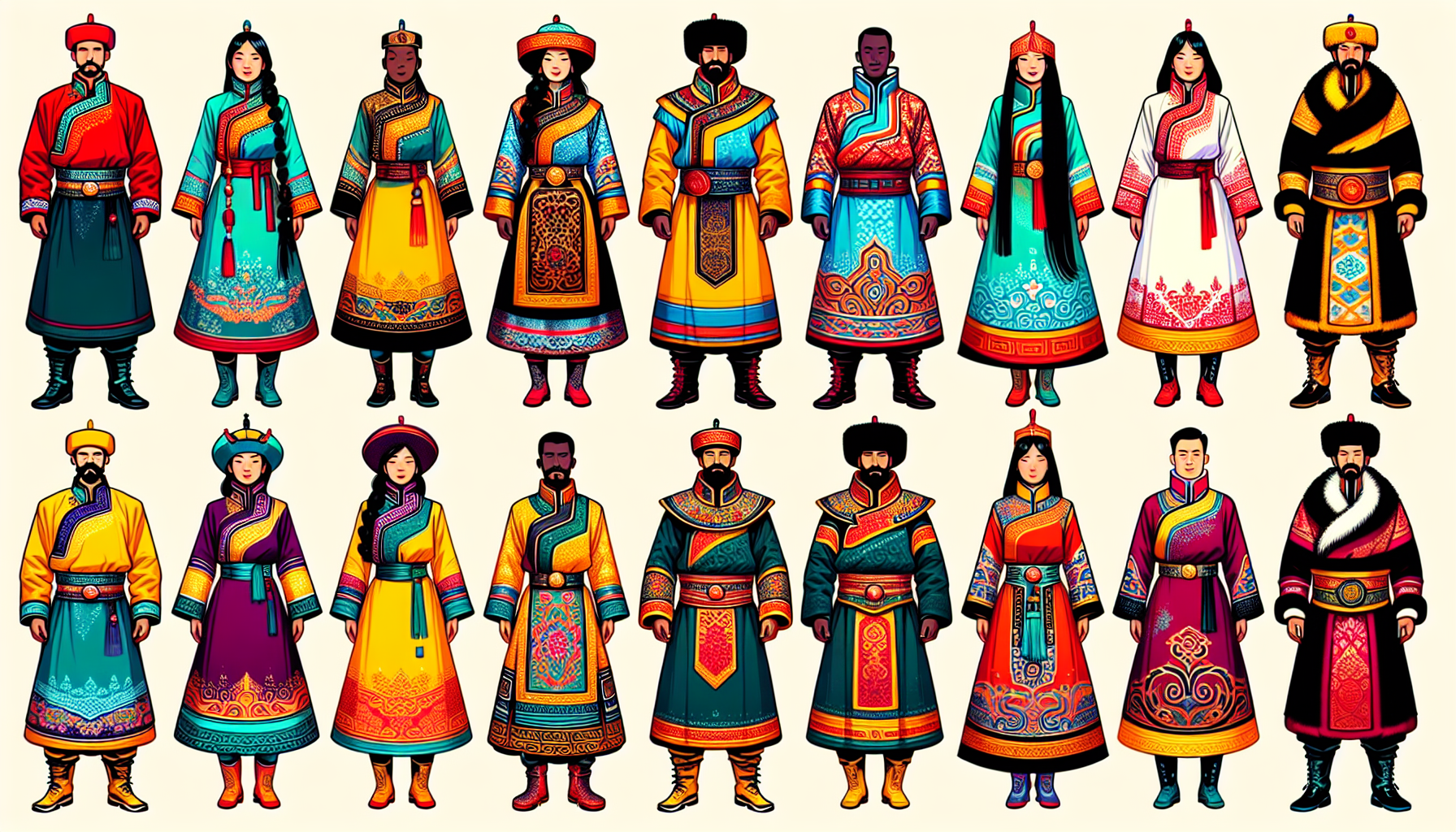
Mongolian deels serve as a vivid display of regional and ethnic variations. Each ethnic group in Mongolia, from the Khalkh to the Chakhars, Torguuds, and Uzemchins, has its unique deel designs, which serve as distinctive cultural features. The Khalkh people’s deels, known for their high hem, square lapel, and knee-length sleeves, are typically brown and bamboo hues, especially among elders. Even the shape of the upper chest opening, round or square, can signal the tribal affiliation of the wearer.
These variations celebrate the rich diversity within Mongolian ethnic fashion, representing a harmonious blend of unity and diversity.
Modern Interpretations and Trends
The Mongol deel has carved a niche for itself in the ever-changing fashion landscape, masterfully merging tradition with modern style. The younger generations in Mongolia now favor red and golden deels, reflecting a preference for these harmonious and aesthetically pleasing colors. They express their style and individuality through modernized versions of the traditional deel, showcasing a blend of respect for heritage and contemporary fashion, while also incorporating unique elements like sable lancing.
Designers and artisans in Mongolia are crafting innovative clothing by integrating traditional designs, fabrics, and colors into modern styles. These contemporary deels feature materials such as fur and leather, seen in variations like the nekhii deel and sawkhin deel, catering to fashion needs across different seasons. Thus, the Mongolian deel continues to evolve, embodying the power of tradition while embracing the spirit of modernity.
Caring for Your Deel
As a cherished garment, a Mongolian deel demands attentive care. Depending on the material, different maintenance methods are needed to ensure its longevity. Woolen deels should be exposed to sunlight and brushed thoroughly to maintain their quality.
On the other hand, silk deels require careful hand washing in cold water with a gentle detergent, and should be shielded from direct sunlight during drying. Therefore, tending to your deel entails not only preserving a piece of clothing but also valuing a fragment of Mongolian heritage.
Celebrating the Deel: Mongolian Deel Mongol Festival
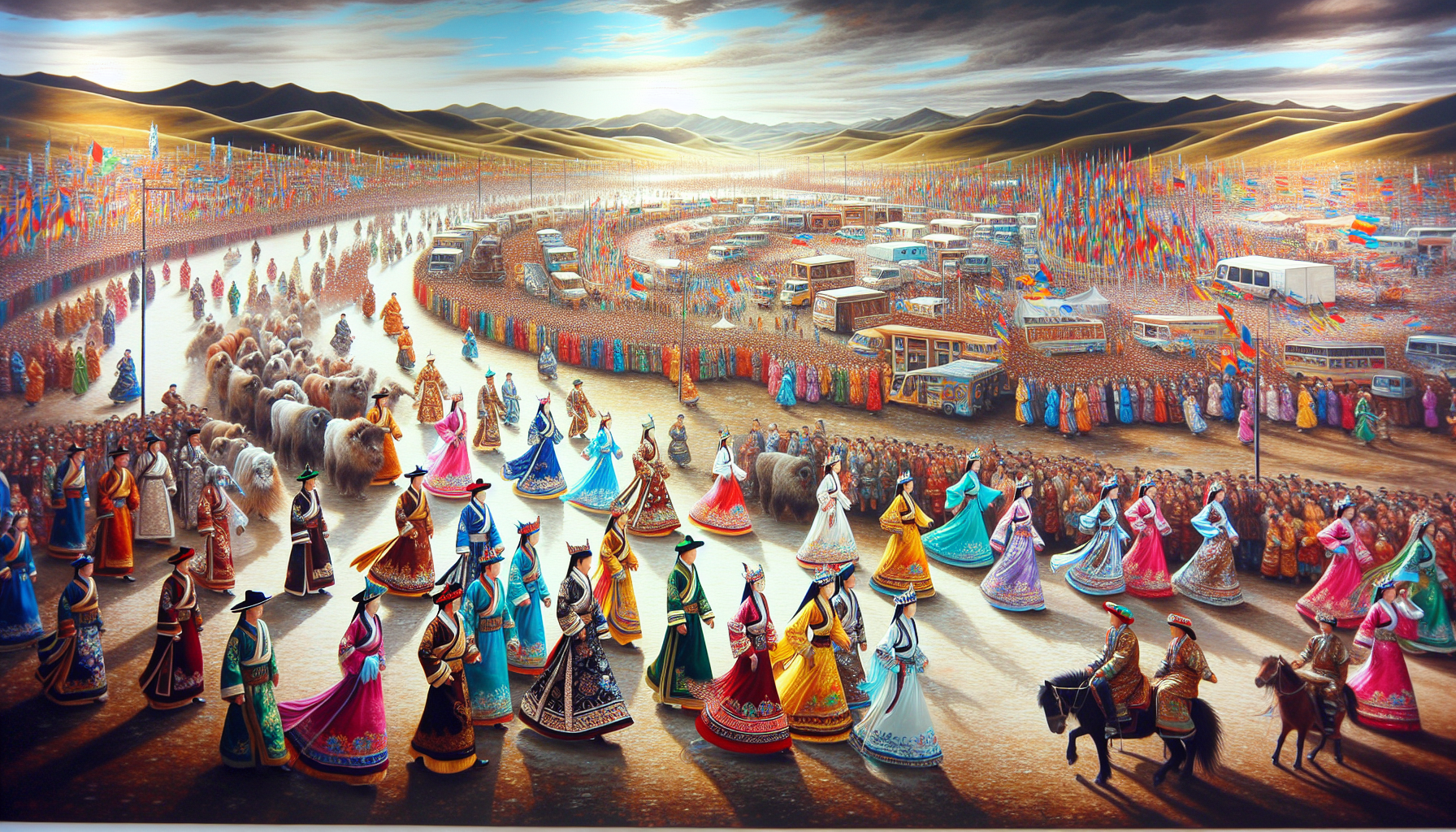
Each summer, the Mongolian Deel Mongol Festival comes alive, festively celebrating Mongolian culture and traditional dress. This national holiday is a testament to the nation’s cultural identity, fostering national pride through the wearing of traditional clothing. Participants don their finest deels, hats, and accessories, showcasing Mongolia’s traditional dress and the intricate craftsmanship involved in their creation.
The festival’s events span parades, fashion shows, and cultural exhibitions, all highlighting the diversity and beauty of Mongolian national clothing. The National Costume Festival, a central element of the Mongolian Deel Mongol celebrations, provides an opportunity for participants to display regional styles and share their distinct cultural heritage through their traditional clothes.
Hence, the Mongolian Deel Mongol Festival transforms into a grand platform, where the Mongolian deel, embodying the spirit of Mongolia and its people, takes the spotlight.
Traditional Mongolian Clothing Deel
The Deel is a very comfortable piece of clothing to wear. It is perfect for both cold and hot weather conditions. The Deel can be easily layered with other clothes to adjust to the temperature.
In the cold of Mongolian winter, We wear what is called a dakh, which is made of 6-8 tons of wool. In addition, there are some rules for taking care of deel.
If deel made by wool keep the deel in bright sunlight and then scrub it with a brush.
If deel made by silk, It is best to hand wash in cold water with a mild detergent. After washing, wrap it in a dry towel to remove excess moisture and keep it away from sunlight.
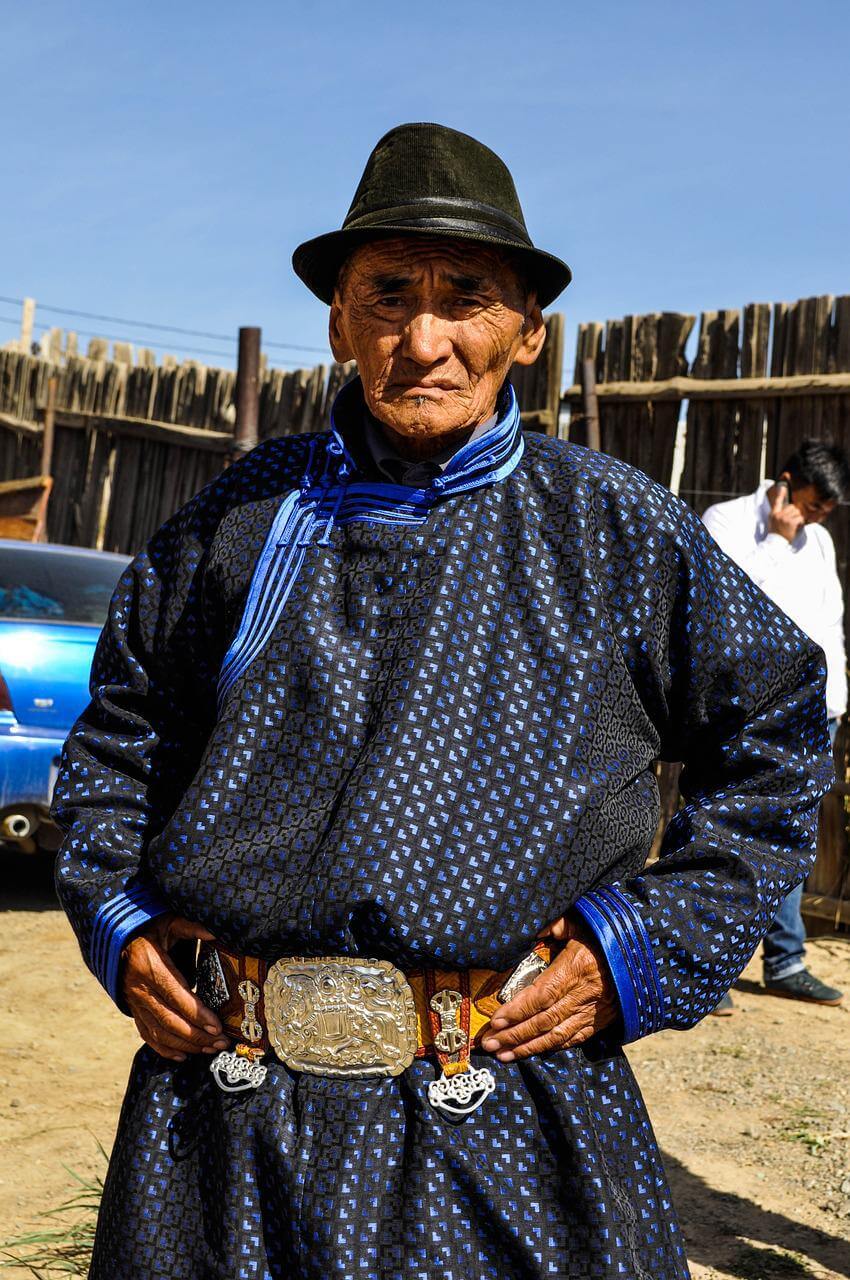
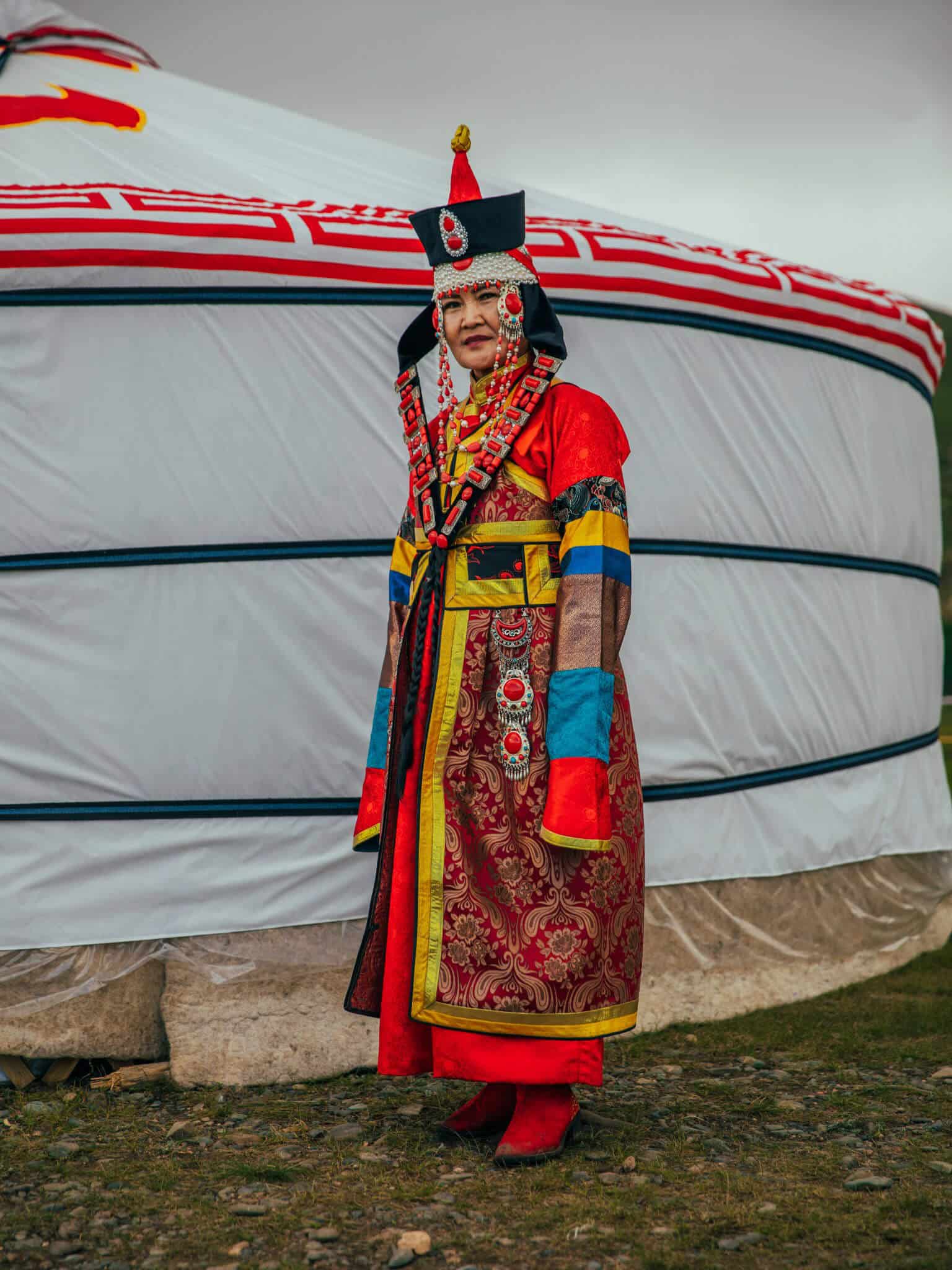
Meaning of Deel clothing?
The Mongolian national costume looks great when worn in full. The Mongolians have a beautiful tradition of naming their national clothes as:
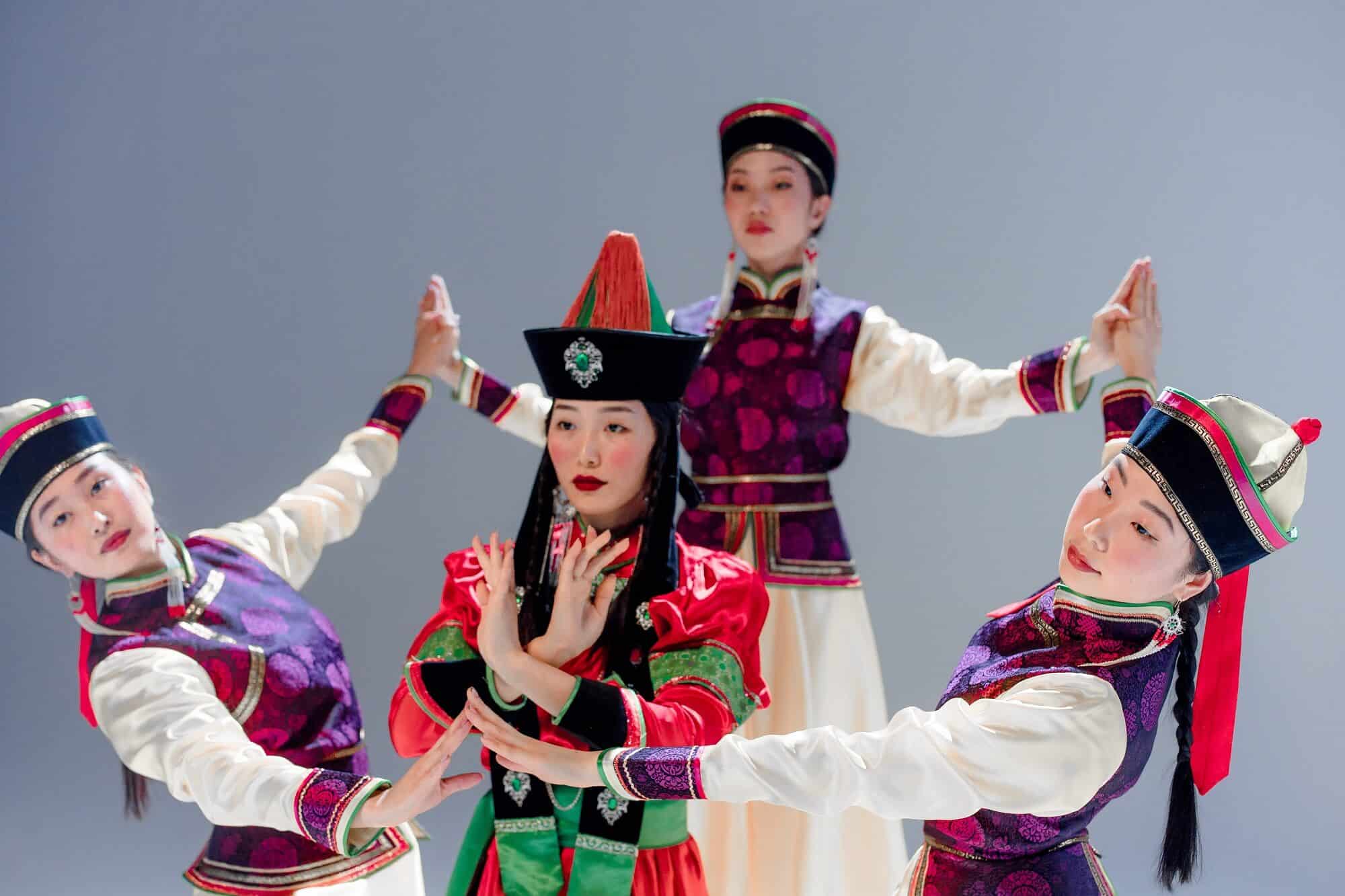
- Hat of the rising state
- Belt of the to be a successful state
- Robes of the developing state
- Boots of the buttress state
- Khan state vest.
How to choose the color of the Deel?
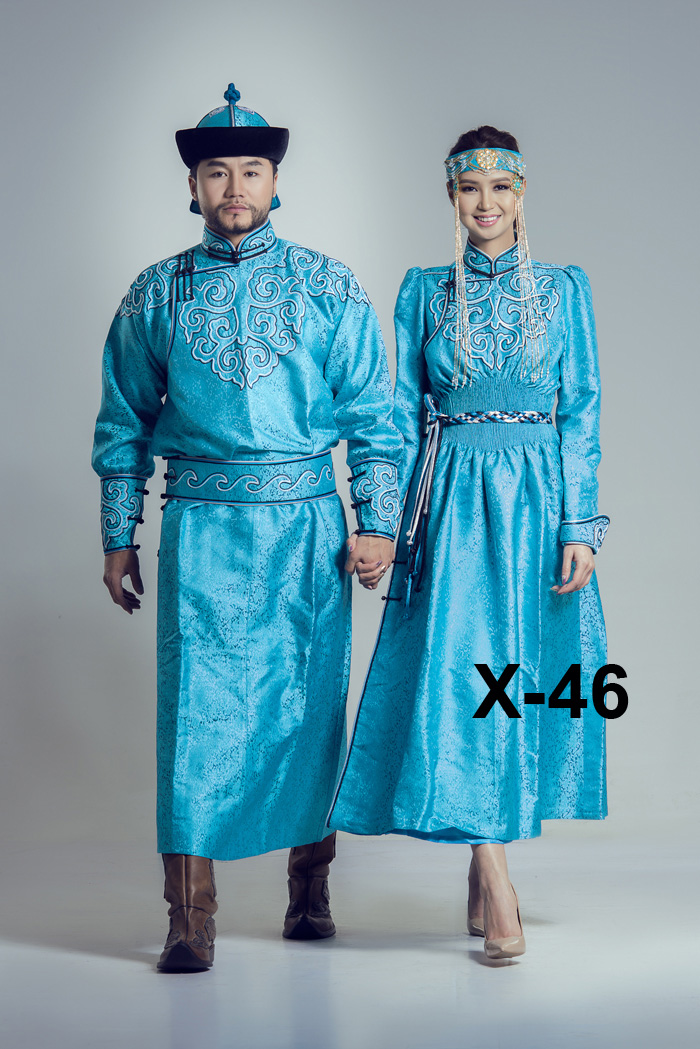
The choice of Mongolian clothing color is related to the environment, climate, land, color of grass, and culture.
In the past, Most people used to make deel in blue, red, green, yellow, and silver colors in the past time, but in modern times, due to the harmony of colors and aesthetics, they are wearing preferred red and, golden Deels.
Important things involved in making a Mongolian deel:
The main materials are:
– 1 m of fabric (woolen, cotton or silk)
– 1 m of fur
– 2 m of ribbon (Mongolians call it “Emjeer”)
– 1 m of braid
– 4 buttons.
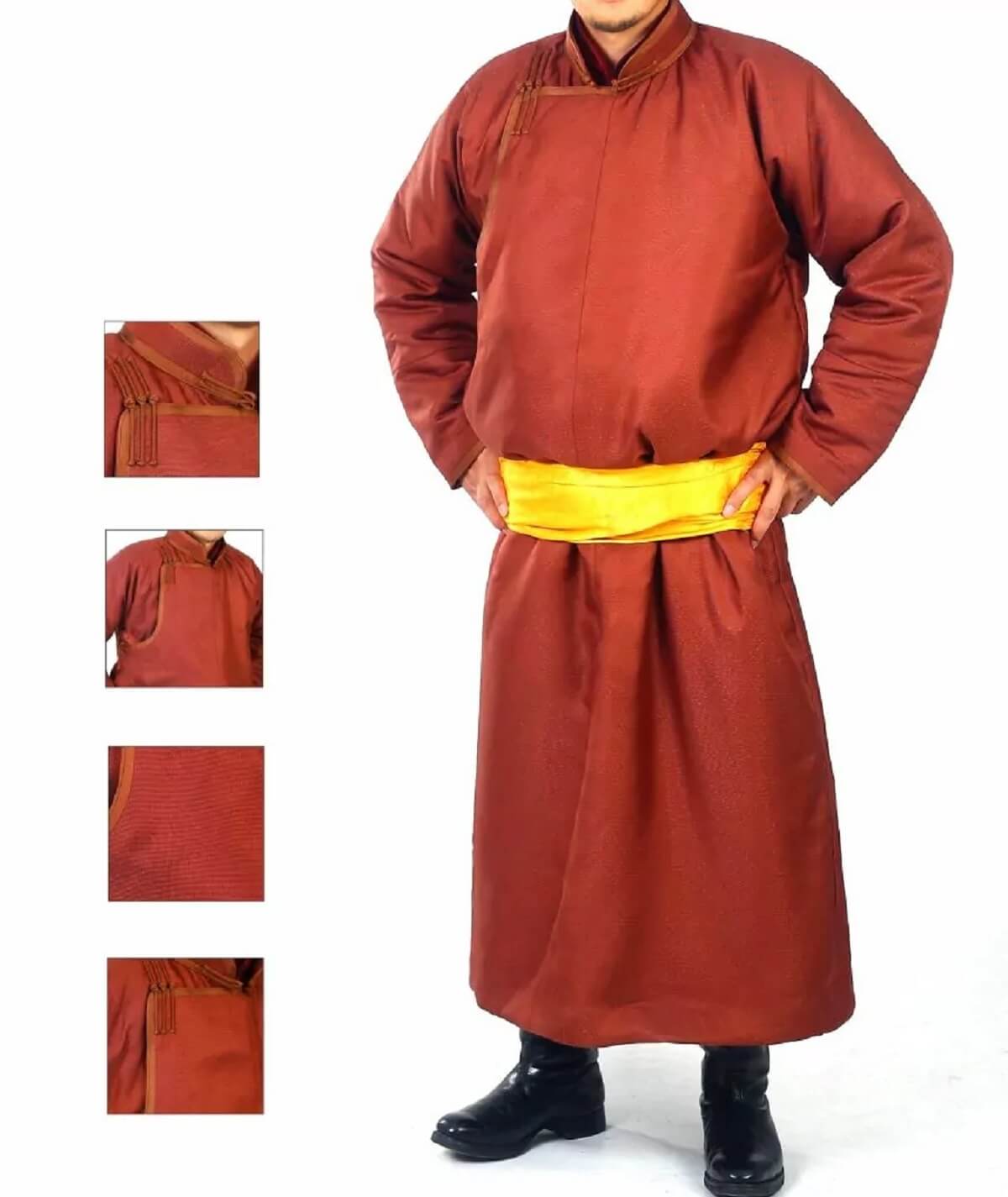
There are 3 basic steps to making a deel:
- prepare the main fabric of the Deels
- then prepare the ribbon (emjeer)
- the most important thing is sewing. Let’s introduce 3 common stitches used to make a Deel. It’s lockstitch, inseam stitch, knot stitch
Fact #1
Parents say to children who have received new deels ”the owner is eternal and the fabric is fragile”. This must be said because it is a Mongolian tradition.
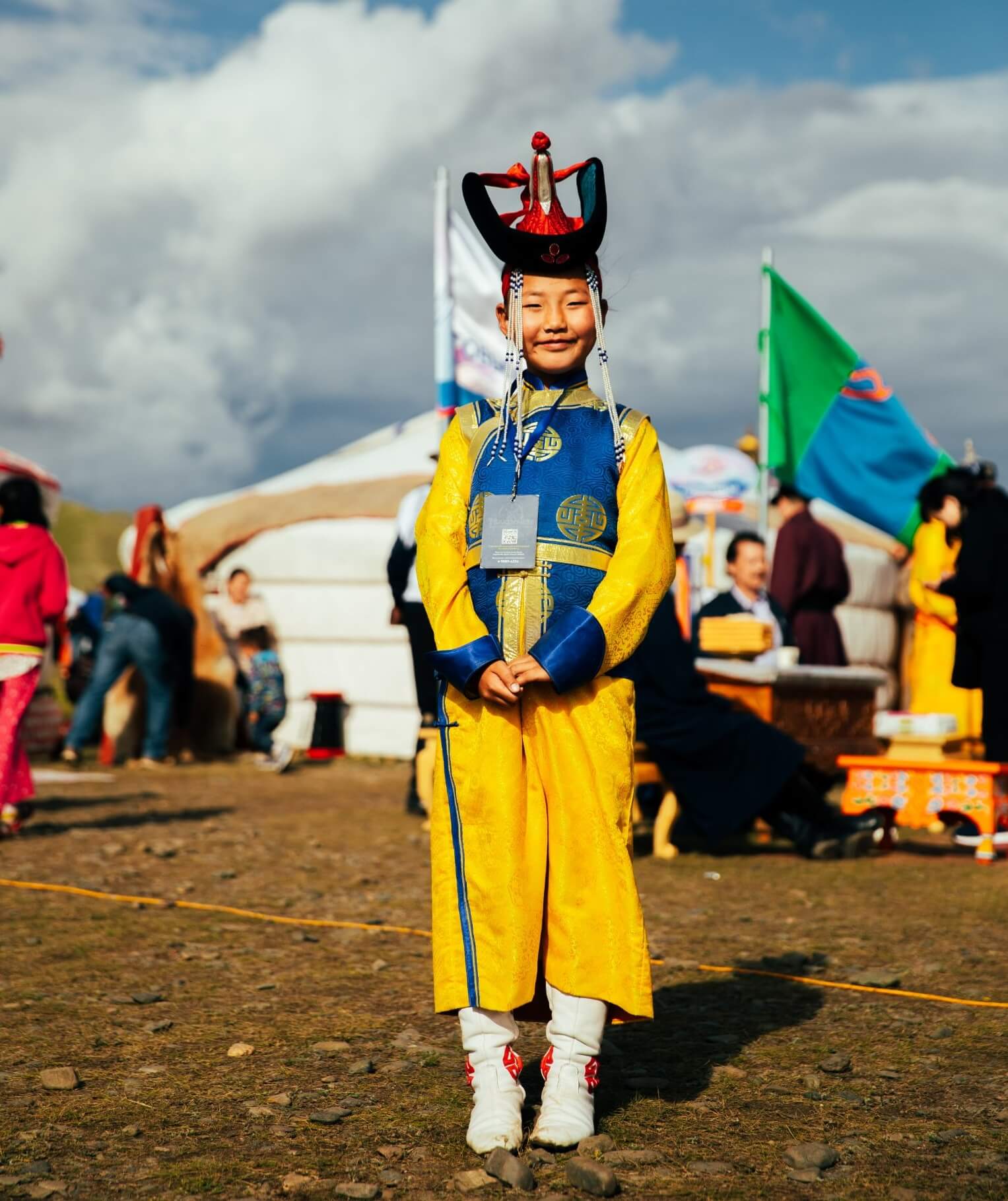
Fact # 2
Deel is very respectful clothing in Mongolia. So you can not walk over the Deel.
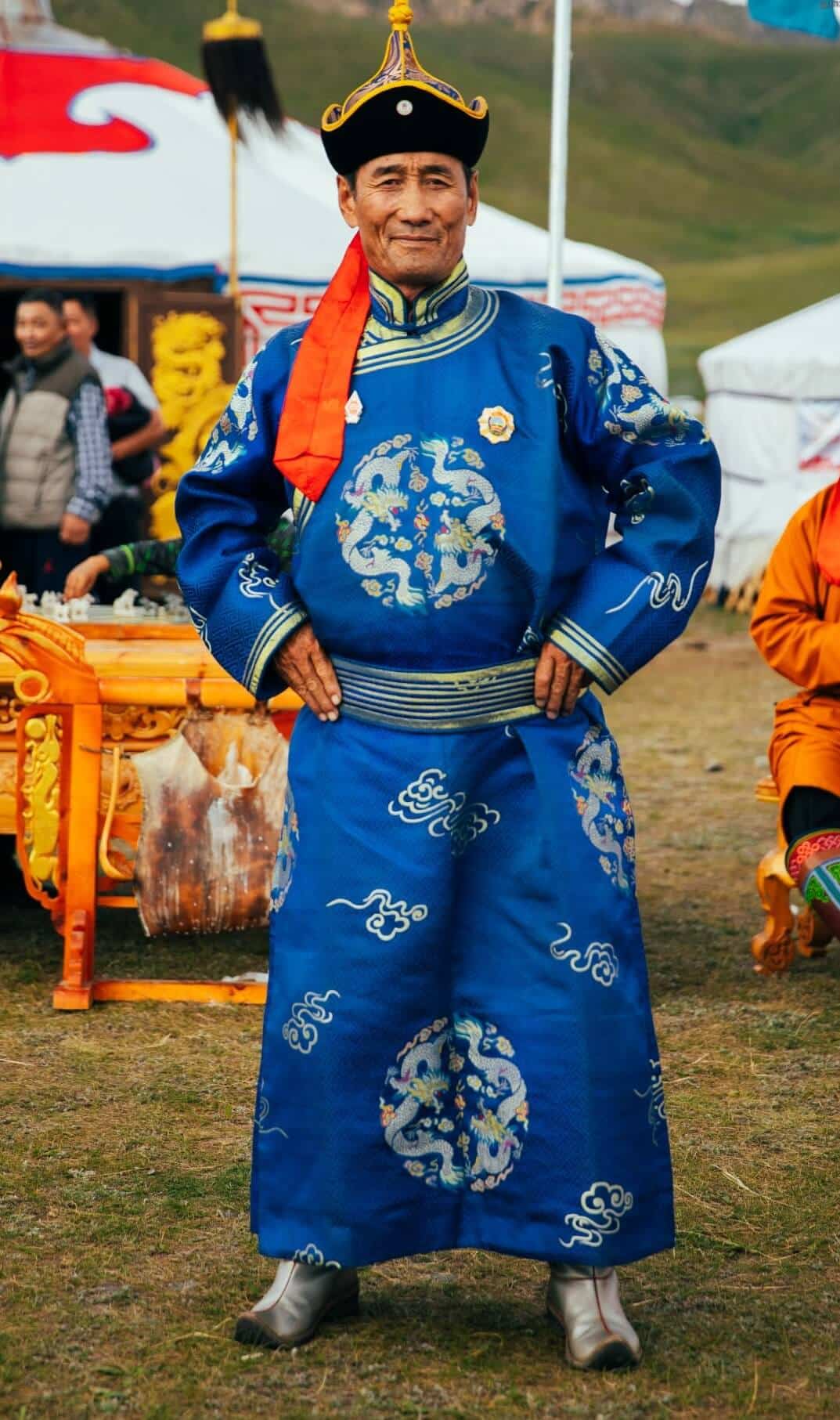
Fact # 3
Every summer in Mongolia we celebrate Deel Mongol Festival, which is a national holiday. On this day, Mongolians wear their traditional clothing and perform various traditional sports and activities.
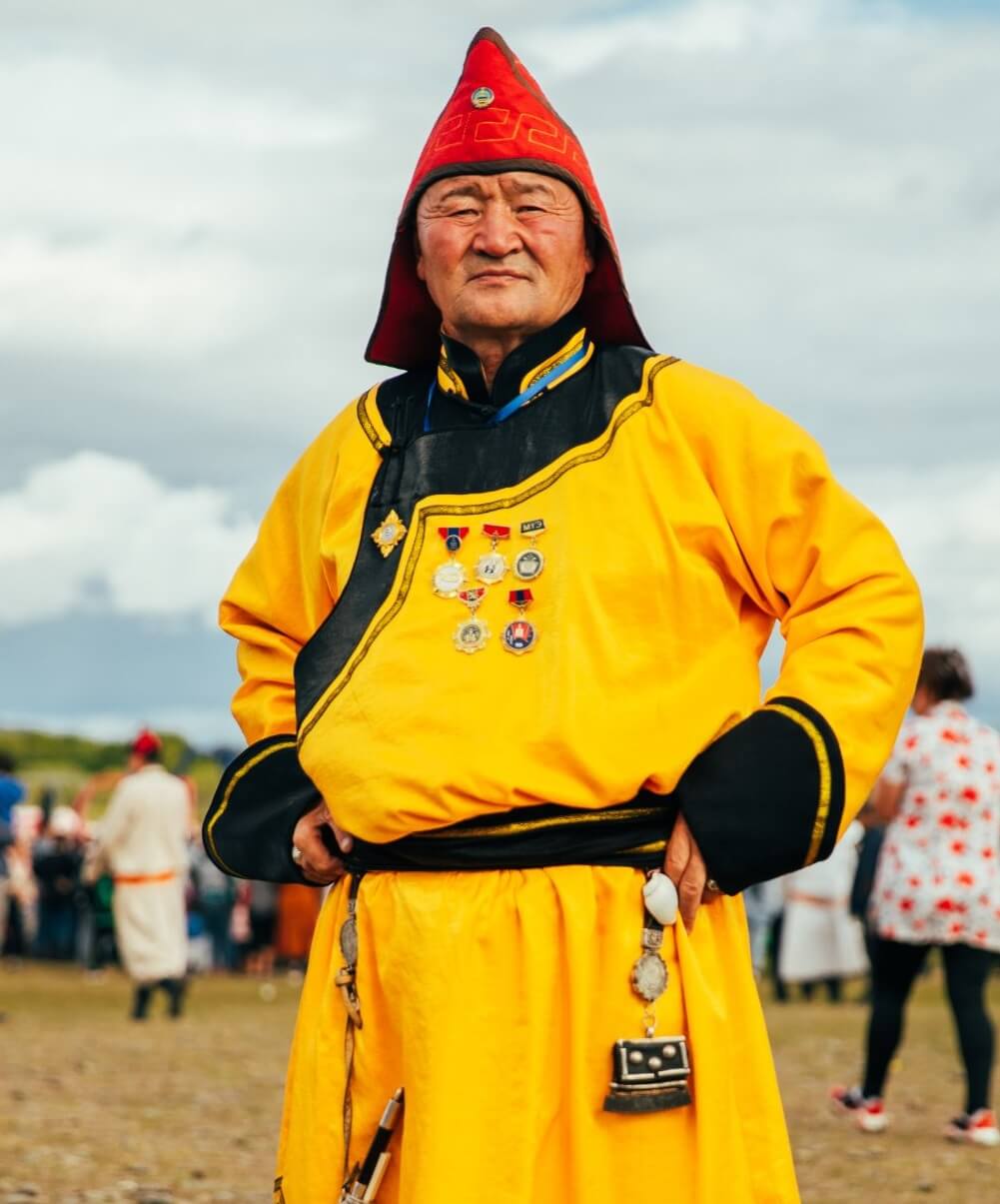
Frequently Asked Questions
What is a Mongolian deel?
A Mongolian deel is a traditional garment worn by the Mongols, consisting of a long caftan-like garment typically worn with a hat, vest, belt, and boots.
How old is the Mongolian deel?
The Mongolian deel originated 2200 years ago in the Khunnu empire and has been worn by Mongols for centuries, making it an ancient garment with a rich history.
What is a Mongolian tradition related to the deel?
When children in Mongolia receive new deels, parents often say “the owner is eternal and the fabric is fragile,” highlighting the enduring value of the garment. This tradition reflects the cultural significance placed on the deel.
What are the traditional names for Mongolian national clothes?
The traditional names for Mongolian national clothes are Deel clothing, Hat of the rising state, Belt of the to be a successful state, Robes of the developing state, Boots of the buttress state, and Khan state vest. These names reflect the deep cultural significance of these garments.
Do you have any questions or comments about the Mongolian Deel? Let us know in the comments below!
Buy New Deel
Related Content:
Share to Public

